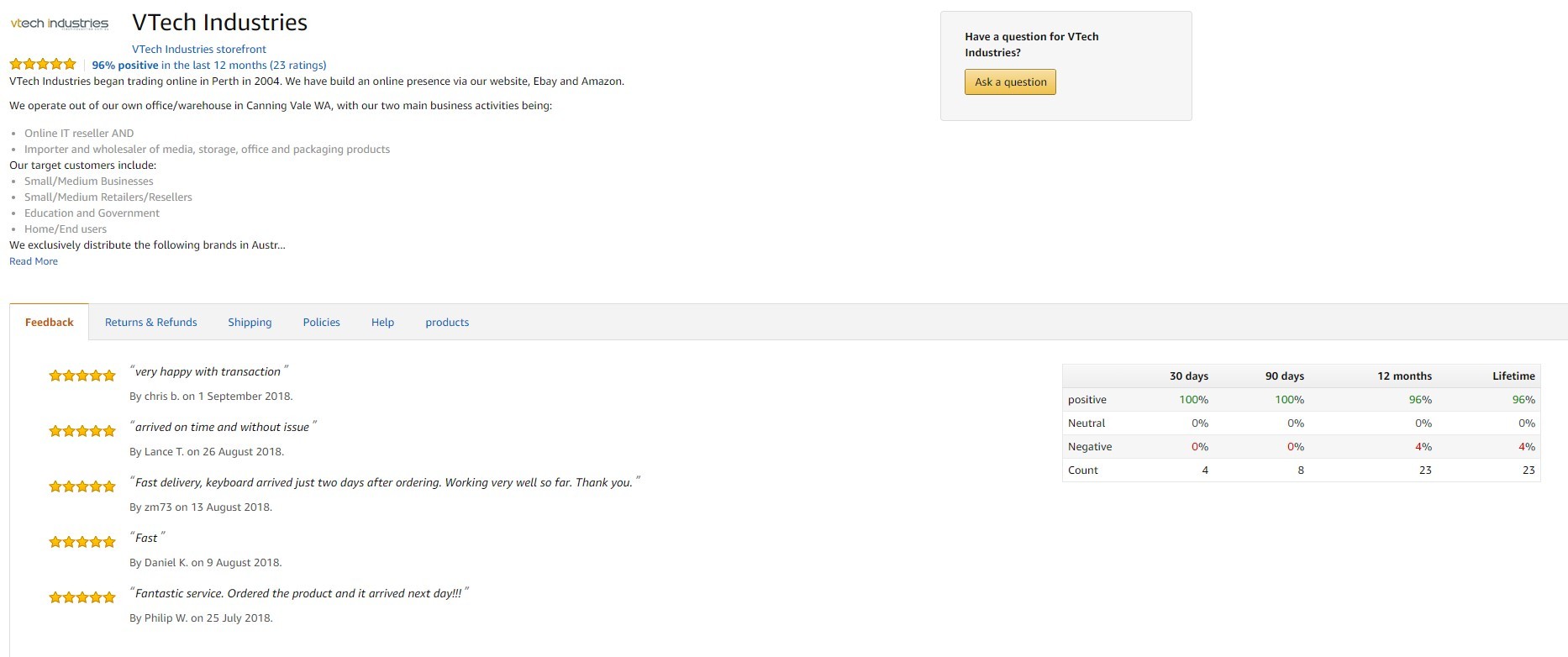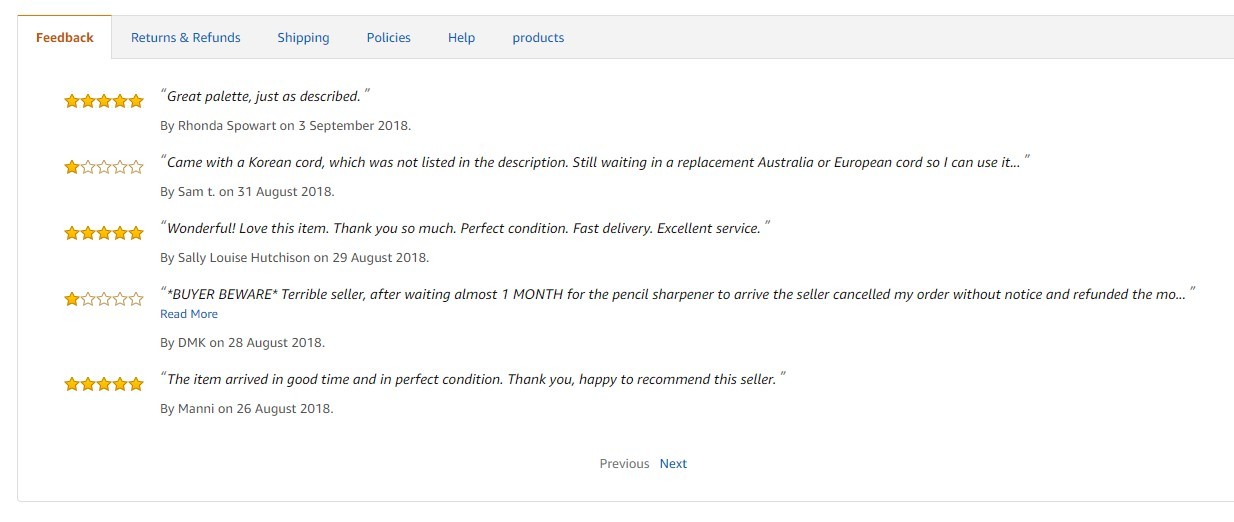
Business • Marketplaces

One thing that can make or break your success on Amazon is your seller ratings, which are commonly checked by customers when they are deciding on a purchase. Seller ratings and reviews can be the reason you get the sale (or don't).
In this post we’ll explore how Amazon seller ratings can impact your business - and what you can do to improve yours.
Your seller rating is not the same as seller feedback.
Seller feedback is the reviews buyers leave about your products and service, while your seller rating is a rating determined by Amazon based on a number of different factors which is displayed to shoppers as a 1-5 star rating.

When a customer views the different sellers of a particular item, the seller rating is one of the most prominent factors displayed on the page.

In this case the top seller is rated 5 stars, has 12 ratings (92% of which are positive), whilst the bottom seller is only rated 3.5 stars and has 12 ratings with only 67% of those positive. The shopper is then able to click through to the buyer and view the individual ratings.

Amazon sellers are graded in a lot of different ways; in addition to feedback provided by customers, merchants are also rated by Amazon itself. The score is based on a scale of 0 to 100 (but displayed to customers on a 5 star scale) and although Amazon keeps the algorithm for deciding each seller’s rating a secret, we know that the following factors are taken into consideration.
Amazon looks at a merchant's performance for each of these factors in order to determine the final seller rating. It’s important to keep in mind that some offenses are weighted more heavily than others, for example a seller maybe harshly penalized for a A-to-z claim, while a late shipment would have a smaller impact on a seller's score. You can also earn bonus points when you provide a service that goes above and beyond what is expected - up to 10 bonus points per order.
Although Amazon doesn’t have a minimum seller rating requirement, you can have your selling privileges removed if you regularly get bad feedback and don’t meet their required performance targets.
| Related Reading: How to Sell on Amazon Australia and Other FAQs
Ratings are important for not just sellers, but shoppers as well, because they weed out low quality items and help consumers avoid dodgy sellers. For example, if I am looking to buy an Apple watch, if there are multiple sellers available, then I’m going to compare my options.

Although the first option has the best price point, it’s sitting at only 3 stars with 43% positive reviews. The second option has a much better Amazon seller rating with 4 stars and 79% positive feedback, so I opt for the second option. So although it’s important to price your products correctly on Amazon, you can’t afford to forget about your rating.
Now we know what seller ratings are, where they come from and how important they are, it’s time to look at how you can improve yours.
This is a big one - the online marketplace has made customer service their number one priority, as evident in their mission statement.
Our vision is to be earth's most customer-centric company; to build a place where people can come to find and discover anything they might want to buy online.
- Amazon's Mission Statement
Naturally, this extends to the service each seller provides too.. Now this doesn’t mean you should be answering emails at three in the morning, but you should be aiming to respond within a 24 hour period.
If your listing says it will arrive by a certain date, it’s important to make sure you deliver on that promise. Make sure you have systems in place to ensure every delivery is shipped on time and that you provide a tracking number for every shipment. Amazon requires that a tracking number is sent for at least 95% of shipments or you risk losing your ability to sell non-FBA (Fulfilment by Amazon) items.
Running out of stock or sending the buyer an item that doesn’t match your listing is also heavily penalised by Amazon; so much so that a pre-fulfilment cancellation rate of 2.5% or higher can get your selling privileges restricted. Make sure you have a system in place that prevents you from running out of stock, and helps ensure you are sending out the right items.
| Related Reading: 3 Ways to Accelerate Your Order Fulfilment With Efficient Picking, Packing and Shipping
Amazon protects their buyers from major issues and illegitimate transactions. They are covered by the Amazon A to z Guarantee which is designed to ensure they only receive the best service when purchasing from Amazon sellers. Again this comes back to Amazon’s primary focus being its customers.
The following situations are covered under the guarantee:
Amazon takes A-to-z claims very seriously and is one of the most heavily weighted factors when it comes to your seller rating.
The best ways to avoid A-to-z claims are:
Reviews can also affect your Amazon selling rating, with sellers who have higher positive feedback fairing better than those who get negative or no feedback.
Plus, the more reviews your listing receives, the more easily Amazon will categorize your listing. This is because reviewers tend to include relevant keywords naturally in text. The Amazon search function prioritizes listings with more reviews - positive or negative (and it can tell the difference).
But remember, don’t ask for reviews! It’s against Amazon’s regulations. Even including a slip of paper in your package is non-compliant.
Although it won't directly impact your seller rating, ensuring all your product listings are optimized means more customers will find you, and the more customers that find you, the better chance you have getting great feedback and building up a seller history.
We’ve covered this in our post How to Optimise Your Product Listing on Amazon Australia and in our latest webinar: Selling On Amazon 101.
We've also got you covered with our Free Amazon Australia Guide. Grab your copy.
